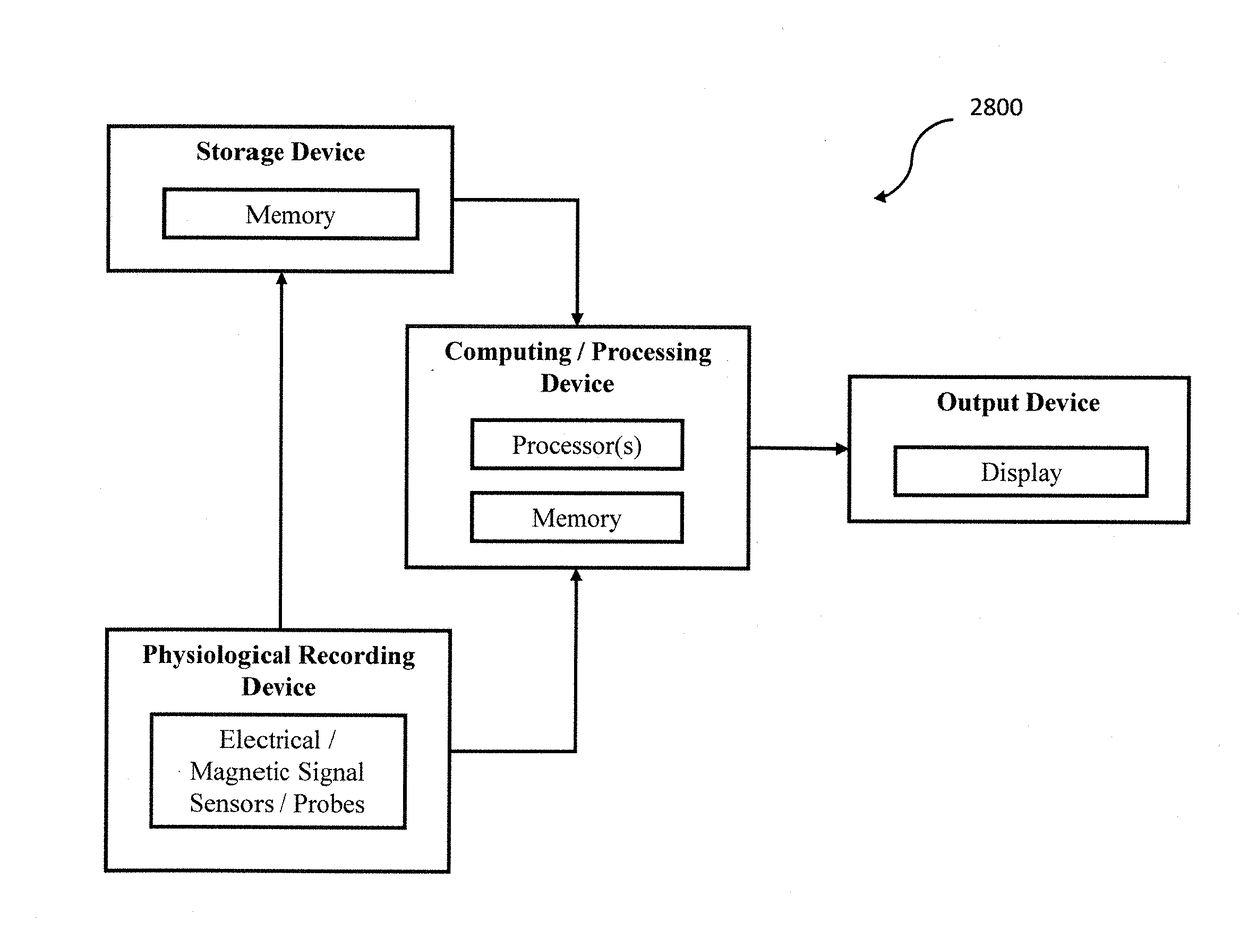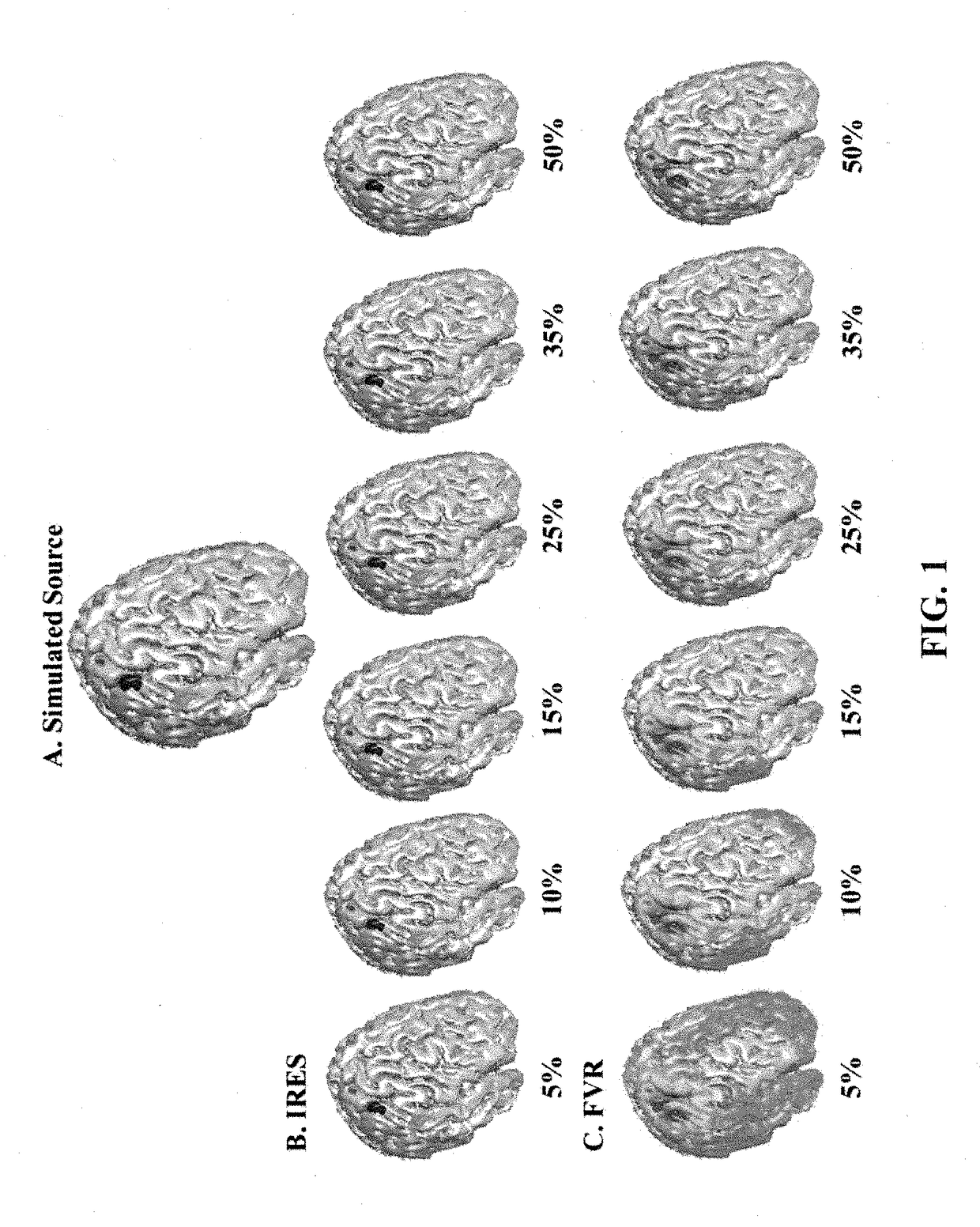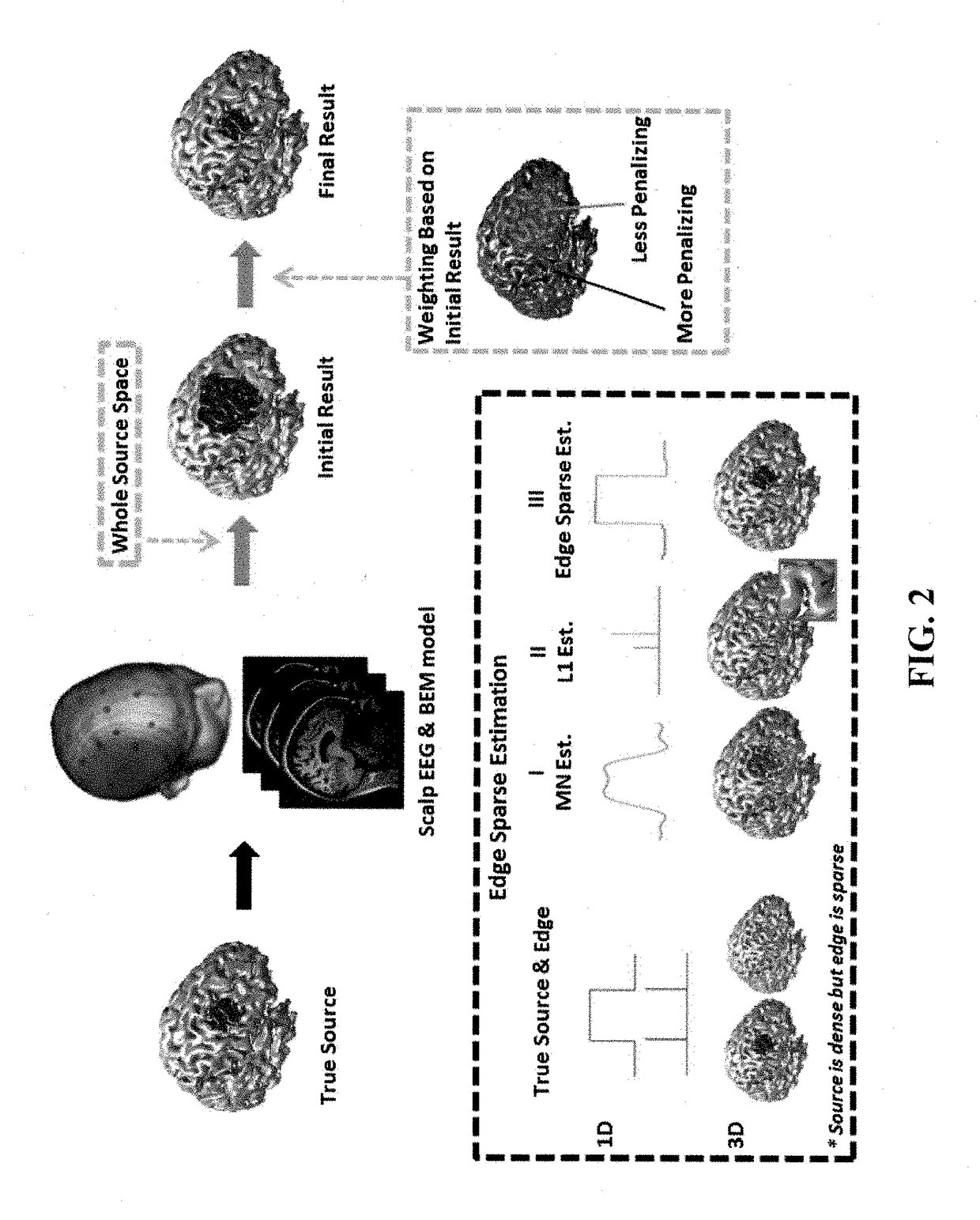System and method for assessing electrical activity using an iterative sparse technique
a technology of electrical activity and iterative sparse, applied in the field of system and method for assessing electrical activity using iterative sparse technique, can solve the problems of over-determined inverse problem, nonlinear optimization problem, and high under-determined model
- Summary
- Abstract
- Description
- Claims
- Application Information
AI Technical Summary
Benefits of technology
Problems solved by technology
Method used
Image
Examples
example implementations
Dynamic Source Imaging with IRES
[0092]An efficient algorithm can be used to implement IRES in a manner suitable for tracking dynamic brain signals with fast variations over time. As discussed above, in order to solve the problem efficiently it may be assumed that extended sources with coherent activity over the extended source patch are generating the EEG or MEG signal, in a given time window.
[0093]Based on convex optimization, namely the fast iterative shrinkage-thresholding algorithm (FISTA), the spatio-temporal IRES can be implemented in the following algorithm. In this algorithm, after a time basis function is estimated from surface measurements such as EEG and / or MEG, the underlying extended source generating these signals will be estimated. Basically, in these embodiments, the following optimization problem is solved at each iteration:
=∑i=1Nc(V)1+∑i=1Ncαi1subjecttoϕ(t)-KF2≤β(9)
[0094]Where φ(t) is the scalp electrical / magnetic measurement over the interval of interest (an E×T m...
example performance measures
[0126]In order to evaluate IRES performance, multiple metrics were used. As extended sources are being considered in this study, appropriate metrics being able to compare extended sources should be used. The first measure is the localization error (LE). The localization error calculates the Euclidean distance between the center of mass of the simulated and estimated sources. In order to compare the shape and relative position of the estimated and simulated sources the overlap metric is used. The amount of overlap between the estimated and simulated sources is calculated and divided by either the simulated source area or the estimated source area to derive a normalized overlap ratio (NOR). This normalized overlap shows how well the two distributions match each other. These measures should both be as close as possible to 1. If an overestimated or underestimated solution is obtained, one of the two measures can be close to 1 while the other decreases significantly. Another important me...
example results
ents of IRES on Public Data Sets
[0139]To further evaluate IRES, the algorithm was tested on the Brainstorm epilepsy data which is publicly available at http: / / neuroimage.usc.edu / brainstorm. The tutorial at http: / / neuroimage.usc.edu / brainstorm / Tutorials / Epilepsy includes the anonymous data of a patient suffering from focal fronto-parietal epilepsy, who underwent surgery and is seizure-free within a 5 year follow-up duration. The patient underwent intracranial EEG (iEEG) recording prior to surgery. The iEEG study results as well as the post-operational MRI are not available in the data set but are presented in a published paper elsewhere. The procedure outlined in the Brainstorm tutorial was followed to get the average spikes and the head model, with the exception of the head model conductivity (ratio) for which we used the conductivities we have used so far, throughout the paper.
[0140]FIG. 20 shows the IRES solutions in this data set. Comparing these results with the clinical finding...
PUM
 Login to View More
Login to View More Abstract
Description
Claims
Application Information
 Login to View More
Login to View More - R&D
- Intellectual Property
- Life Sciences
- Materials
- Tech Scout
- Unparalleled Data Quality
- Higher Quality Content
- 60% Fewer Hallucinations
Browse by: Latest US Patents, China's latest patents, Technical Efficacy Thesaurus, Application Domain, Technology Topic, Popular Technical Reports.
© 2025 PatSnap. All rights reserved.Legal|Privacy policy|Modern Slavery Act Transparency Statement|Sitemap|About US| Contact US: help@patsnap.com



